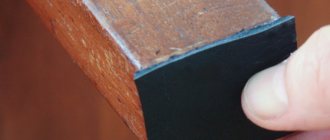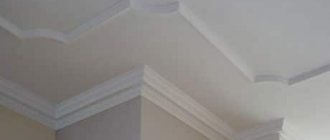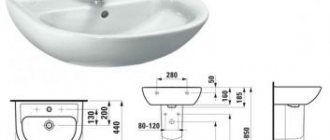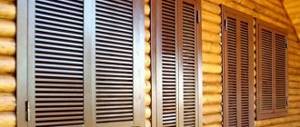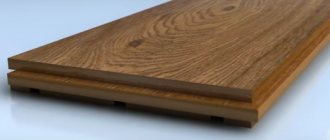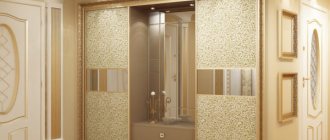Every summer resident or owner of his own home should know how to cut the corners of ceiling plinths, and do it at home without the involvement of builders. Nowadays, repairs are an expensive business. Therefore, many people try to do as much as possible on their own. After all, in fact, if you put in the effort, be patient and have the necessary materials, you can do it just as well as the builders. And to make a beautiful ceiling, you need to know how to create a beautiful vault from plasterboard, both for the kitchen and for the hall.
Cutting plinths for the ceiling
Many people think that cutting a ceiling fillet does not involve any difficulties, and what is the problem anyway? In fact, there are many features that have negative consequences. Therefore, in order for the ceiling to be perfect, you should know how to cut the baseboards correctly and accurately, making high-quality wall decor of your own production.
Beautiful ceiling with skirting boards
Form
The construction market offers a lot of products of a wide variety of shapes, which are divided into three groups.
Extruded
This type of plinth is also called stretched. Because the cross-section pattern in any part of the segment will be the same. The entire pattern is identical and consists of bulges or grooves that run lengthwise. Selecting a pattern is not a problem for you, but if you putty the cracks, it will take a little more effort.
Extruded type plinth
Laminated
This type of baguette is the most unpretentious in installation, and very little effort is required to install it. There are no drawings here, so possible cracks can be easily filled and removed. The main task is to trim it correctly.
Laminated baguette
Injection
This type of ceiling plinths requires the most attention and effort for installation. Here the pattern has a periodicity, but the meticulousness of trimming should be at its best. In this case, putty will not hide the sides, because it will create the effect of artistic modeling. In terms of aesthetics, this type of material is really chic.
Injection type plinth
Material
In addition to the shape, you should also pay attention to the material from which they are made. Because this also affects the characteristics of the work.
Expanded polystyrene
This material is most in demand on the market. It is inexpensive. Density directly affects the quality of baguettes. It is worth choosing denser textures - they are easier to work with. But loose ones are difficult to install. But the main problem with polystyrene foam (expanded polystyrene is made from it) is the difficulty of sanding. Any flaw or even minor putty will be visible on the baguette.
Trimming is done with a hacksaw or a sharp knife (construction knife).
Expanded polystyrene skirting boards
Polyvinyl chloride
Working with plastic baguettes is even more difficult than with foam ones. The fact is that in this form it is generally impossible to putty or correct flaws. For installation, you should use a special tool - molding. If not, then the master will have a hard time. Basically, such baguettes are installed on plastic ceilings. Therefore, you can’t really talk about beauty. You need to cut it with a sharp tool.
Plastic moldings for ceilings
Tree
Wooden baguettes are very difficult to install, but they belong to the elite segment due to the naturalness of the material. Most often they are used for sheathing a wooden vault. Its cutting occurs using a special saw with small teeth. Alternatively, you can use a good metal blade.
Wooden ceiling plinth
Gypsum
This type is the most expensive. You can find another name - stucco. Basically, it is created by the master himself, so his skill is important. There are also purchased options. The gypsum baguette looks really chic. The main advantage is that flaws and jambs can be easily removed - putty, sanding, painting). The disadvantages include the great fragility and high cost of both the material itself and the work involved in its installation. Moreover, the cutting should be as correct as possible the first time. In addition, when installing a gypsum molding, it is worth considering its considerable weight.
Gypsum baguette
Polyurethane
Now polyurethane baguettes are the most optimal when it comes to price-quality ratio. Although its cost is considerable, this material is significantly superior in comparison with gypsum. Advantages: lightness, no cracks, excellent adhesion, nice texture, possibility of factory painting, ability to create imitation of various natural materials, as in the photo below. In addition, installation does not require much effort. To cut it, you should use a special knife that will not form crumbs.
Ceiling plinths made of polyurethane
Features of cutting ceiling plinths
To ensure that all your efforts and finances are not wasted, you should arrange the corners correctly. The ceiling plinth or fillet can be beautifully laid independently. Of course, stores sell ready-made corners for these tasks, but this is still an additional expense. And with a little effort, you can do it all yourself.
Next, we’ll talk about how to cut the corners of ceiling plinths at home and at the same time maintain a beautiful and neat appearance. There are two ways to perform this task - with and without a miter box.
Correctly cut baguettes on the ceiling
How to Cut Skirting Boards for Ceiling Corners with a Miter Box
Content
How to cut
corners of the ceiling plinth with and without a miter box
Based on the text of the article, we will figure out how to correctly cut the corners of the ceiling plinth using a special tool - a miter box. Appreciated by women, this useful device is not found in every individual, and buying it for a one-time repair is an incomprehensible undertaking.
If so, let’s try to find out what initially, how to cut corners
plinth without miter box.
Our goal is to achieve equally perfect angles
Materials for ceiling plinths
First, let's study the materials where our test subject is made.
To understand how and what to cut, it is better to know the density and other features of the material.
- Styrofoam . The cheapest and weakest material; In general, mechanical strength is not really needed for a product that decorates the ceiling
. - Extruded polystyrene foam is somewhat denser and a little harder to process. However, it is specific: it is cut as needed with an ordinary knife.
- Wood is a more difficult material to process. To cut it you will only have to use a hacksaw.
Advice: it is better with small and frequent teeth. This will make the cut much smoother. A cloth for metal will also work.
A hacksaw is suitable not only for wood
Corner cutting methods
At what angle should I cut the ceiling plinth? angle with a ceiling plinth (in any apartment buildings and the majority of private houses you will not find other angles) - 45 degrees.
READ The Better Way to Cut Porcelain Tile
Right angle, divided into two similar sectors.
How to cut ceiling plinth at an angle?
Cutting ceiling plinth with a miter box
In most cases, a lightweight carpenter's tool is used for cutting at an angle - a miter box . It is essentially a structure made of a duralumin, plastic or wooden tray with grooves that guide the hacksaw blade at certain angles to the axis of this tray.
How to cut corners using this tool?
- We fix the plinth in the tray in the same position in which it will be installed on the ceiling. Align it along the side that will press against the ceiling.
- With your free hand we cut along the guide groove. For wood, as already mentioned, a hacksaw is used. A hacksaw can be used to cut both polystyrene foam and polystyrene foam. Today, of course, foam or polystyrene baseboards can be cut with a knife; but it can be very sharp. Otherwise, the material will crumble under the blade.
- Before attaching it to the wall, the wooden plinth may need to be adjusted with a ratfil. To adjust skirting boards made of softer materials, a sharp knife is again used.
How to join skirting boards
. a blog about products that bring benefits. In this question, the video carefully explains what and how to connect.
How to cut a molding on a ceiling plinth without a miter box if your angles are not 90°
You can’t cut the baguette into the corner, you’ve ruined a bunch of ceiling plinths! This simple method will help you if you have.
How to cut ceiling plinths in the corners? We will need a common tool - a miter box.
How to cut ceiling plinth
in the corners? We will need a common tool - a miter box.
Cutting corners itself is very ordinary; Beware, however, of enormous efforts. The foam just crumbles. Well, it’s easy to split a wooden plinth if there is too much interest.
READ How to Cut Tiles with a Manual Tile Cutter Video
Cutting without a miter box
How to cut corners if you don't have a miter box?
Method 1
One simple solution is to make an analogue of the miter box yourself.
- We put together a simple tray from 3 planks.
- We cut it at an angle of 45 degrees. The angle can be marked with a protractor or a student's square.
It’s not at all difficult to make a miter box yourself. If you have a lot of corners to adjust, this work will pay off
Method 2.4
Many people make do with a tray without a slot. Make an angle template out of paper or cardboard (this is especially important if the angle is not exactly 90 degrees) and draw a line on it, which is why you will have to navigate.
Put together the planks at right angles (in this case, just get by with 2, not 3).
How to cut corners under such circumstances?
- Place the ceiling plinth for regular or suspended ceilings into an improvised tray exactly in the position in which it will be attached to the ceiling.
- Align the tray along the edge of the template.
- Cut the baseboard following the line drawn on the template. Hold the knife or hacksaw strictly vertically.
Method 3
The improvised tray will be useful to us in this case, but it may not be completely different. They simply use a table moved to the wall at a different angle between the wall and the floor.
How to cut corners with such strange equipment?
- Mark future corners on the ceiling, wall and baseboard itself. These are the ends of an imaginary strip that will cut both baseboard boards.
- Place the plinth in the tray exactly because it will be fixed to the ceiling in the bedroom, or in another room, and cut it, focusing on the marks. Again, keep the knife or hacksaw blade strictly vertical.
READ Plunge Saw with Triton Guide Bar
How to cut ceiling plinths in corners with the smallest set of tools? Just. All you need is a pencil, a knife and an eye
How to cut skirting boards in corners with the smallest set of tools? Just. All you need is a pencil, a knife and an eye.
Useful tips
As a result, a few tips that you may need before installing the ceiling plinth
.
- To measure the plinth strip between two corners, follow the usual rule: for an internal corner, the length is measured specifically from it, for an external corner - from a point that is spaced from it deep into the room by the width of the plinth.
- Strengthen the plinth strip to the ceiling and wall for at least 30 years, then adjust the adjacent corner of the subsequent strip. It is much more convenient to try on sections on the floor, rather than on a stepladder near the ceiling.
- Be prepared for the fact that the cuts will have to be adjusted a couple of times. Be patient.
- Don't be afraid to leave small cracks in the corners: they will simply be filled with putty. The exception is wooden ceiling skirting boards made from generous types of wood: due to the texture, even putty chosen to match will be visible.
When you cut the plinth according to the risks on the weight, the remaining cracks can be hidden with putty
Be careful: in general, there is an option to simply avoid all the hassle of adjusting skirting boards. For corners, inserts are often sold that are connected to a plinth cut perpendicular to the axis.
Conclusion
If it is still not completely clear to your company how to cut the corners of a ceiling plinth , then videos of cutting and installation are easy to find on the Internet. A pleasant demonstration of all the steps, I think, will dispel any remaining confusion for our client. Fortunes are under repair!
Source
Using a miter box at home
A miter box is a simple tool that is a carpenter's assistant. It makes it easy to cut workpieces at any angle needed. Its design is not complicated - the tray is made of wood, metal or plastic. This tray has special slots (placed vertically) for cutting at an angle of 90 or 45 degrees.
Some models have a more complex structure with the ability to cut at an angle of 60 degrees. For professional work, there are special models where the workpiece is fixed at any given angle.
Miter box - a simple but important tool
Internal corner
- Take a baguette and attach it to the ceiling. In this case, it is worth setting aside the required length. This blank is inserted into this tool in the same position as it will be placed on the ceiling. You need to press it against the far wall of the miter box.
- You need to hold the fillet with your left hand. The hacksaw, or rather its blade, should be placed so as to create an angle of 45 degrees. The handle should be as close to the hand as possible.
Correct placement of a baguette in a miter box
- Cut the baguette. But you shouldn’t press it too hard to avoid breaking it.
- Near the baguette you should cut off the return strip. It also needs to be placed at the far wall of the structure. But the difference is that you should hold it with your right hand. The hacksaw is placed in the same position as before - at a 45-degree angle. Without pressing, cut off excess.
Hacksaw for cutting ceiling plinths
- After trimming, you should join both planks of the baguette and see how accurately they converge.
Advice : For better orientation during the design of the internal corner, you should start cutting from the front side of the fillet. Where cuts have been made, most will require filing to fit both sides of the corner.
How to correctly cut corners on baguettes ceiling plinth video
How to paint a ceiling plinth, types of solutions and their features
You can add sophistication to the room with the help of decorative ceiling plinths. In addition, this product perfectly masks cracks in corners and errors in the connection of the ceiling to the walls. But only if the installation is flawless. And a convenient carpentry device called a miter box will help with this, which is used to evenly trim the baguette at the required angle.
- Place the baseboard against the inside corner so you can determine the cutting line. Remember that the bottom edge needs to be longer for wall mounting.
- Place the baguette in the fixture. The edge with which you will attach the plinth to the ceiling should be located at the bottom. The position of the plinth should be similar to its subsequent placement during installation.
- Make sure that the baguette fits snugly against the opposite wall of the instrument.
- Its end should be set at the angle you require, for example, 45 degrees.
- Place a hacksaw in the special hole and cut off the unnecessary part of the cornice. Act carefully, smoothly, without sudden movements. Do not apply unnecessary pressure, otherwise the edge of the cut may be damaged.
- When processing an adjacent part, it must be cut in a mirror image.
- After cutting, try on 2 skirting boards; they should fit perfectly together.
- If there are protrusions at the joints, then adjustments are required. For wooden cornices, use a file; for baguettes made of soft material, use a knife.
First you need to decide what size the tool will have.
It should be taken into account that the height and width of the miter box depend on the size of the cut baguette; they cannot be smaller than the cornice. The recommended dimensions are: length - at least 50 cm, width - 20 cm, height - 20 cm. To make a miter box you will need a base, which is a wide rectangular board.
Its dimensions are similar to those described above, that is, 50 by 20 cm. The thickness is 2.5 cm. Guide boards are needed to guide the hacksaw blade when cutting a baguette. They should be the same length as the base. Thickness does not play a special role. The width is determined taking into account the thickness of the base: 20 cm + 2.5 cm = 22.5 cm. Take guides in the form of rectangles. Then you should screw the guides to the ends of the base using screws. Use a protractor to mark the corners. It is enough to set marks at 45 and 90 degrees. Draw lines that should go from these points along the walls of the guides. We use a square for this. Cut along these lines almost to the very bottom to make cuts for the hacksaw. Twist the boards.
Thus, if you cut the corners on the ceiling molding correctly, you can install them without any problems!
External corner
Such work should begin precisely from the inner corner. This will help to better maintain the proportions and dimensions of the baguette. If you start from the outside, then if you make a mistake, you will end up with a lack of strip along its entire length.
- The fillet should be attached to the ceiling and marked according to the required dimensions.
- Using your left hand, hold the baseboard and press it against the wall that is closest. In this case, the hacksaw (its handle) should be as close to the hand as possible.
- Cut the workpiece.
- The right hand holds and presses the striker against the wall. The tool blade should be at an angle of 45 degrees.
- Cut off the excess baguette.
- The corner is joined.
This method of cutting fillets is suitable if the corners in the room are perfectly even and straight. Otherwise, the result will be disappointing, and it is better to resort to another pruning option.
The nuances of trimming internal corners
Work related to how to make the inner corner of a ceiling plinth begins with the product being applied to the ceiling. This is necessary to measure the required length of the part.
When the measurements are completed, the plinth is installed in the prepared miter box. It is placed so that the position of the product in it is exactly the same as on the ceiling.
You need to hold the plinth with your left hand and make sure that it fits snugly against the wall of the device. The section that is intended for installation on the ceiling should be located on top, and the lower part is pressed to the bottom of the miter box.
The hacksaw blade is turned at an angle of 45 degrees and begins to cut. The tool itself is held as close to the left hand as possible and when cutting, do not press hard on it. After we have succeeded in cutting out the inner corner of the ceiling plinth number one, we begin to work with the adjacent product. They cut it in the same way, but in reverse, as if in a mirror image.
Creating markings on the ceiling
By creating a mark on the ceiling, you are guaranteed to cut off the excess correctly and in the exact size. You just have to work hard, because holding the fillet suspended and basting at the same time is quite inconvenient. But this method is the most accurate and practical.
By attaching the baguette to the ceiling in the right place, you will immediately notice all the features. This will allow you to immediately outline them and take them into account when cutting and installing.
Making a mark on the ceiling
Cutting ceiling plinth
A pair of blanks is initially cut at an angle of 90 degrees. In this case, the end of the plinth rests against the wall, which is placed perpendicularly. After this, add one baguette. A line on the ceiling is drawn along its contour.
After this, the first plank rests, and according to this principle, the counter plank is applied. Again, a line along the contour is marked.
The point that is located at the intersection of both lines is the mark for cutting the baseboard. Each fillet should be applied again to the ceiling to mark points for subsequent cutting.
Draw a cut line that runs from the established point to the second edge of the baguette.
Having carefully cut the baseboards, they should be joined and mounted in place. Using this method, internal corners are easily and beautifully processed.
Cutting ceiling plinth
How to cut a ceiling plinth without a miter box
Cutting the plinth for the inner corner
If you don’t have a miter box, you can do without it:
- To do this, we apply the plinth to the ceiling the way it should stand and draw a line along the ceiling.
- Then we apply the plinth to the ceiling to the right of the corner and draw a second line.
- In the place where the lines intersected, make a mark on the plinth and draw a line from the mark to the lower corner of the plinth. This line will be the cutting line for the baseboard.
Marking for trimming the left corner of the plinth
We do the same with the left corner. We cut strictly along the lines with a sharp knife. Then we apply it to the corner and check if there is a gap. If there is a gap, then carefully trim the corners. After which the plinth can be glued in place.
Advice. Do not use significant force when cutting the baseboard. It may wrinkle and become deformed after you glue it in place after the glue has dried.
Marking for trimming the right corner of the plinth without a miter box
Trim the right corner of the baseboard
Cutting the baseboard for the outer corner
Without a miter box, you can easily cut the fillet for the outer corner:
- To do this, we apply the ceiling fillet as it should stand to the right of the corner. Draw a line with a pencil along the ceiling beyond the corner.
- Then we apply a fillet to the left of the corner and draw a line along the ceiling until it intersects with the first line.
- We make marks on the fillet at the intersection of the lines and at the place where the corner of the room is located.
- We connect the marks with a line on the fillet and cut it with a sharp knife. The cut should go inside the fillet.
- We check the joint at the corner, trim it if necessary and glue the fillet in place.
Secret tips for cutting baguettes
In order for pruning to occur not only accurately, but also as correctly as possible, you should take into account several important little things that can affect the result.
- It is necessary to take correct measurements, which you then use to cut the skirting boards for the ceiling. To determine and mark an internal corner, you should start taking the length directly from the corner. To mark the outer corner, do not forget to take into account that the baguette will look into the room at a length equal to the width of the baseboard itself.
- It is prohibited to fix the ceiling plinth strips until you have approximately established their placement and cut the back molding. Only when the corner fits perfectly with both strikers can you begin their full installation and fastening.
- Defects and flaws in skirting boards for ceilings made of wood or polyurethane can be removed and corrected using a special nail file or file. Expanded polystyrene skirting boards are corrected with the sharpest blade.
- If all adjustments do not bring the desired result, then you can use regular putty.
- In order not to spoil your ceiling plinth, it is worth doing several preliminary cutting tests on small pieces. This will allow you to study the process in practice and get better at it; you should start with decorating the toilet.
If you are properly armed and have patience, cutting skirting boards for the ceiling will not be difficult. The main thing is to choose the most suitable method for performing such an action. It is important not to forget about attentiveness and accuracy, because the material is very delicate and does not accept brute force.
Beautiful baguettes indoors
Knowing the rules and features of how to cut the corners of ceiling plinths at home, you can easily create a beautiful look for your room, and repairs will take much less money. All that remains is to choose heating radiators, complete the repairs and you can live. After all, the work of master builders is not cheap these days. And to master the entire technology of cutting ceiling plinths in even more detail and learn about the secrets from professionals, watch the thematic video.
Related publications
- Read
How to cut glass correctly
- Read
Warm electric baseboard
- Read
How to make a warm water baseboard
- Read
Baguette in the interior
- Read
How to accurately measure and cut the corner of a ceiling plinth without a miter box
- Read
Makeshift miter box tray with your own hands
Making a miter box with your own hands is also simple.
Method 1. You will need three wooden planks or boards, which must be put together in U-shaped boxes. After that, the required corners are marked on the walls of the box, and the cut is made with a hacksaw. The end result should be a wooden miter box with grooves cut into it.
Method 2. Composition of an improvised miter box and a template with outlined lines. For ease of cutting, it is necessary to design something that will comfortably hold the ceiling plinth strip, since it is difficult to hold it suspended. It is enough to put together a corner from two wooden strips or boards. On paper you need to draw strips with angles for cutting at 40 5 degrees or at any other angle. Then we apply the plinth blank to the corner, press it with our hand, as described in the technology for introducing a miter box, move the paper with the template under the edge where we plan to make the cut, and cut it off. During the cutting process, we focus on the line drawn on the paper.
Method 3. You can use anything as an improvised miter box, anything that forms a corner. For example, a table pushed against the wall.
Important! Pay attention to the rule for taking measurements for cutting ceiling plinths. To mark an internal corner, you need to measure the length directly from the corner itself. To mark the outer corner, you need to be aware that the plinth will protrude into the room at a distance equal to its width.
You should not secure the ceiling plinth strips before you have cut the counter strip and tried out their placement. Only after the two strikers have completely come together in the corner can you begin to strengthen them to the ceiling. Small flaws can be corrected with a file or a nail file in the case of wood and polymer skirting boards. To adjust the foam products, you will need to use a sharp knife.
If at one point, even after adjusting the skirting boards, a small gap remains between them, do not despair, it can be repaired with putty. It is easy to cut the ceiling plinth without the help of others. But in order not to break a huge number of products, it is better to practice on small workpieces in advance.
